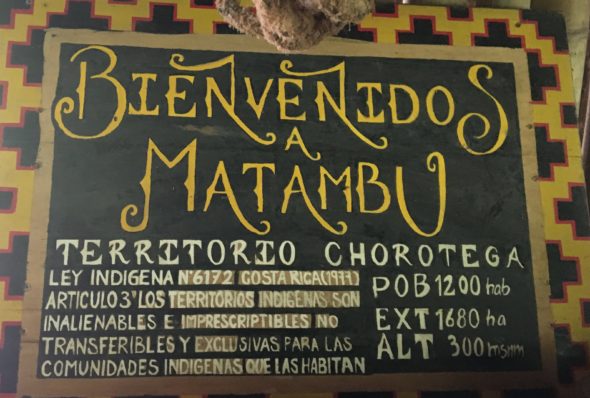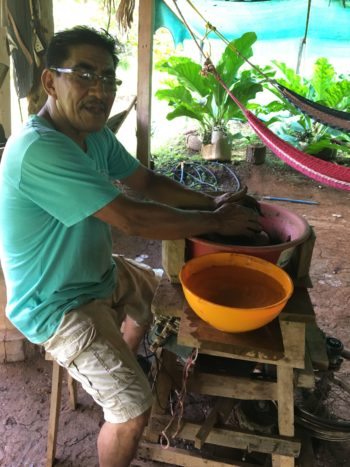Matambu: Indigenous Territory

Matambu is a beautiful community of a modern day indigenous tribe called The Chorotega. In fact, the Nicoyan peninsula is actually named after the last great Chorotegan warrior, Chief Nicoya.Today, the original land of the Chorotegan natives has been returned to their descendants where they live in a lush and thriving protected community 90 minutes by car from Nosara.
I decided to visit Matambu to because I wanted to learn some of the grace and wisdom of the native tribes. Since, in 2017, living in harmony has eluded so many of us, could the ancients teach us how?
Ezekiel Aguirre-Perez is a pottery maker, storyteller, historian, naturalist, and indigenous tribe council member. He owns a beautiful ranch in Matambu, where he receives visitors to share all manner of things.
“Do you have time for a walk?” he asked. “I have an old Chorotega trail in my backyard. We can walk along it and I can tell you the history of the Chorotega.” And with those words, we walked back in time.
The first place that Ezekiel showed me was a wooden dome with a wooden circle hanging from its ceiling. He explained that it was called a “temescal” and it was used for a ceremony with Mother Nature.

In the temescal, each stake that goes into the ground is sprinkled with a bit of salt and accompanied by a prayer when it goes into the ground. Then, the wooden skeleton is covered in blankets, and hot stones are placed in a dirt bowl carved from the earth in the center of the dome. The Chorotegans burn leaves and sing prayers.
They begin by apologizing to Mother Earth for any harm.
“Mother Nature gives us food, we must respect and take care of it,” Ezekiel explained. “We then ask Mother Nature for providence. At the last ceremony that we had, everyone felt the presence of the Spirit of the jaguar.”
Nicoyans are also known for their longevity, and I asked Ezekiel his opinion on why Nicoyans not only live long, but also remain very active into old age. Part of the explanation was temescal, which detoxifies the body and soul.
He also added a few of the same answers that I kept on hearing:
- Going to bed early, rising before dawn.
- Simple diet with a lot of organic corn.
- Strong social network.
- Pure drinking water.
Basically, he explained, it’s living as previous generations did. Ezekiel had one more to add to the list:
“Sex with your clothes on!” he said with a chuckle.
Ezekiel continued to pull us down a trail that wound down a steep mountainside. He gave an amazing tour of the jungle whilst sharing Chorotega history and ways of life. At the end of the walk, he brought me to his pottery workshop, where he started molding a pot on an electric wheel he built himself from scratch.
“Don’t tell NASA,” he said with a wink.

After a few more jokes, he left me with some very powerful words of inspiration in the spirit of the Chorotega:
We have to share every single thing because the things don’t belong to anyone. They belong to everyone.
I picked out a piece of Ezekiel’s pottery to bring back home with me. Just above his pots was a sign that said
In Lak’ Ech …. Hala Ken ….
I asked him what the significance of the sign was, and he explained that is how Chorotegans bid each other farewell. They come together for a type of handshake in which the fingers become intertwined in a design that looks like a snail shell, to symbolize the ongoing spiral of infinity, friendship that never ends.
One person says:
In Lak’ Ech
It means: I Am the Other You ….
Hala Ken is the reply.
Translation:
You Are the Other Me.
In Lak’ Ech (Matambu)
https://vimeo.com/227542912
Karen Henson Jones is the author of Heart of Miracles, a spiritual travelogue. She is also a Philip Stein Global Filipino Hero and speaker for Women in Leadership’s Economic Forum. www.karenhensonjones.com




